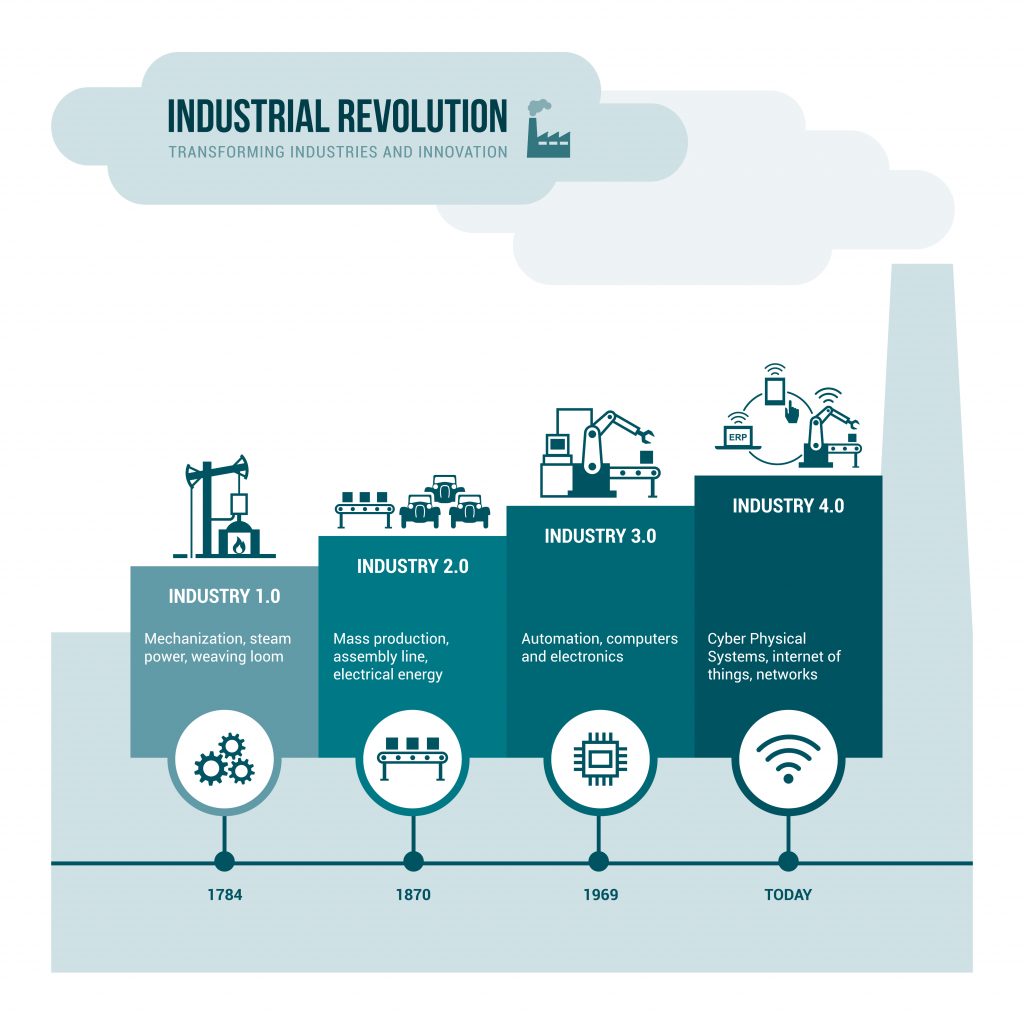Instructor Profile: Maroun Nehme
Maroun Nehme, director of Buena Park High School’s Advanced Robotics and Mechatronics program, started folding SACA into his program shortly after he became the head of it. He said it started off as a way to get something in the hands of students along with their diplomas, but it’s turned into a lot more.
He got his Gold SACA instructor certification and began testing his students for the Gold credentials. After seven students passed the Silver exam, six attempted and passed the Gold exam.
“We became the very first college or high school in California to have Gold Certified students and a Gold Certified instructor,” Nehme said.
He said he wanted to make sure his students got a little recognition, so he began posting their projects and accomplishments on social media.
That’s when his community began taking notice. A councilman for the Buena Park City Council saw the hands-on training in action, and asked Nehme to bring his students to a public meeting to honor them and their work. He also said industry began taking notice and wanted to see how they could benefit from Nehme and his lab.
“Their parents were super stoked and I think it just gives more recognition to the program,” Nehme said. “And now we’re beginning to partner up with some companies that may use my classroom as a training facility for their employees, which is pretty big for a high school.”
He said it was a big deal, especially since he wasn’t sure how to deliver SACA curriculum at first. Nehme said a presentation from Joe Russo at Klein Educational Systems helped him see how to keep things moving. Working with students in pods helped him make sure he could keep 30 students going at once and still give them time to test on the necessary skills.
Watching them gain interest in the first year is huge, he said, and part of that is how the initial curriculum is built.
“I like the 101 curriculum because it gives students a taste of everything,” Nehme said. “It doesn’t go super deep into anything, but it gives them a taste of all these different things, whether it’s electrical, pneumatics or robotics. They go into year two, they’re doing the same thing and they can decide what they want to learn, what they want to pursue.”
He said that gives them opportunity once they graduate outside of just going to a four-year institution. He said it helps motivate students while they’re in high school, and find paths to high-paying careers once they graduate.
“I think one of the roles that SACA fills is provide for not just the students, but their parents, a purpose for them to go to school,” Nehme said. “They would like them to get into some kind of career where they can learn a trade and earn a decent living, especially in Southern California. If a student wants to go into a field, they can stack those certifications and use them to get a job.”
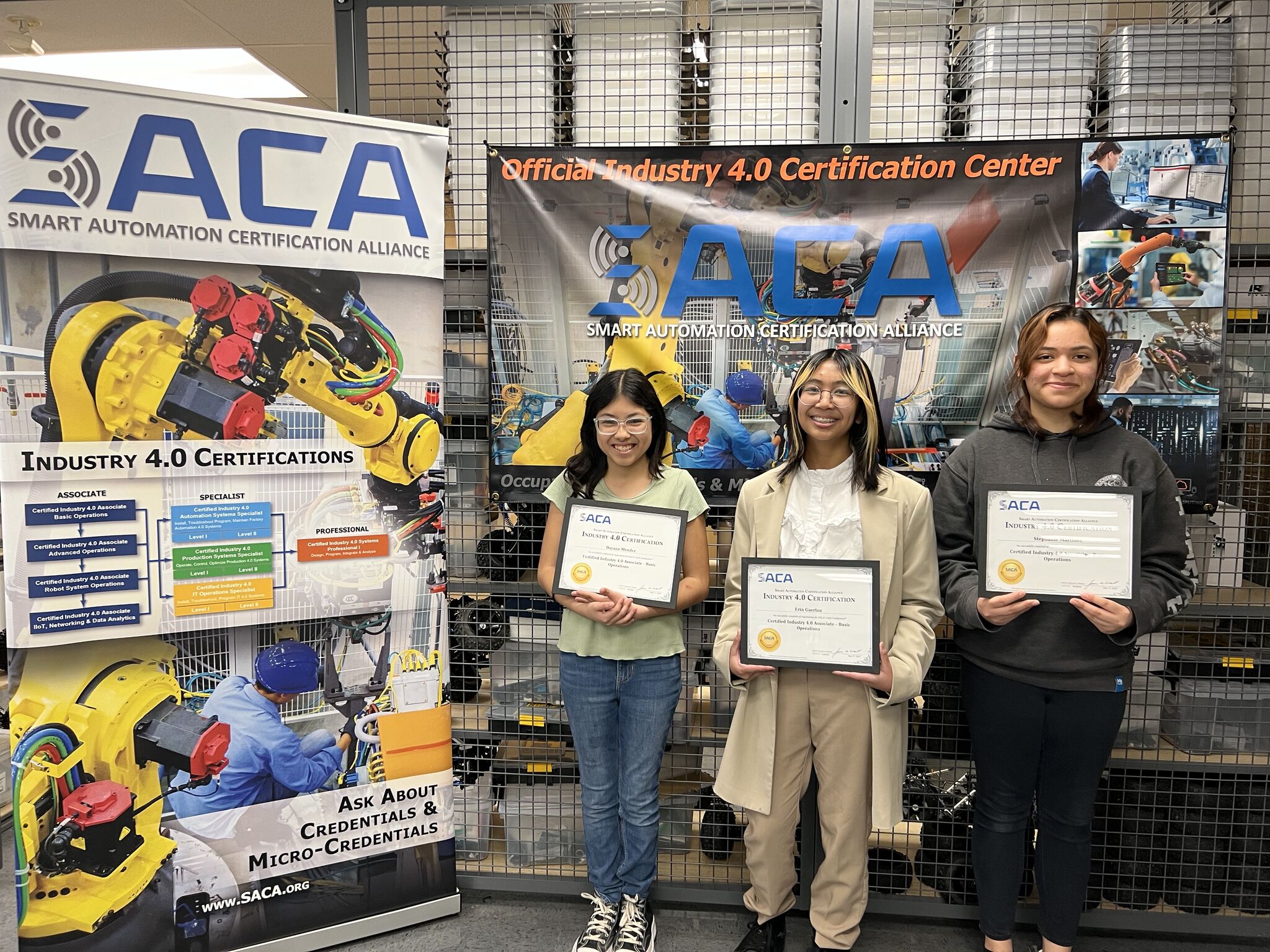
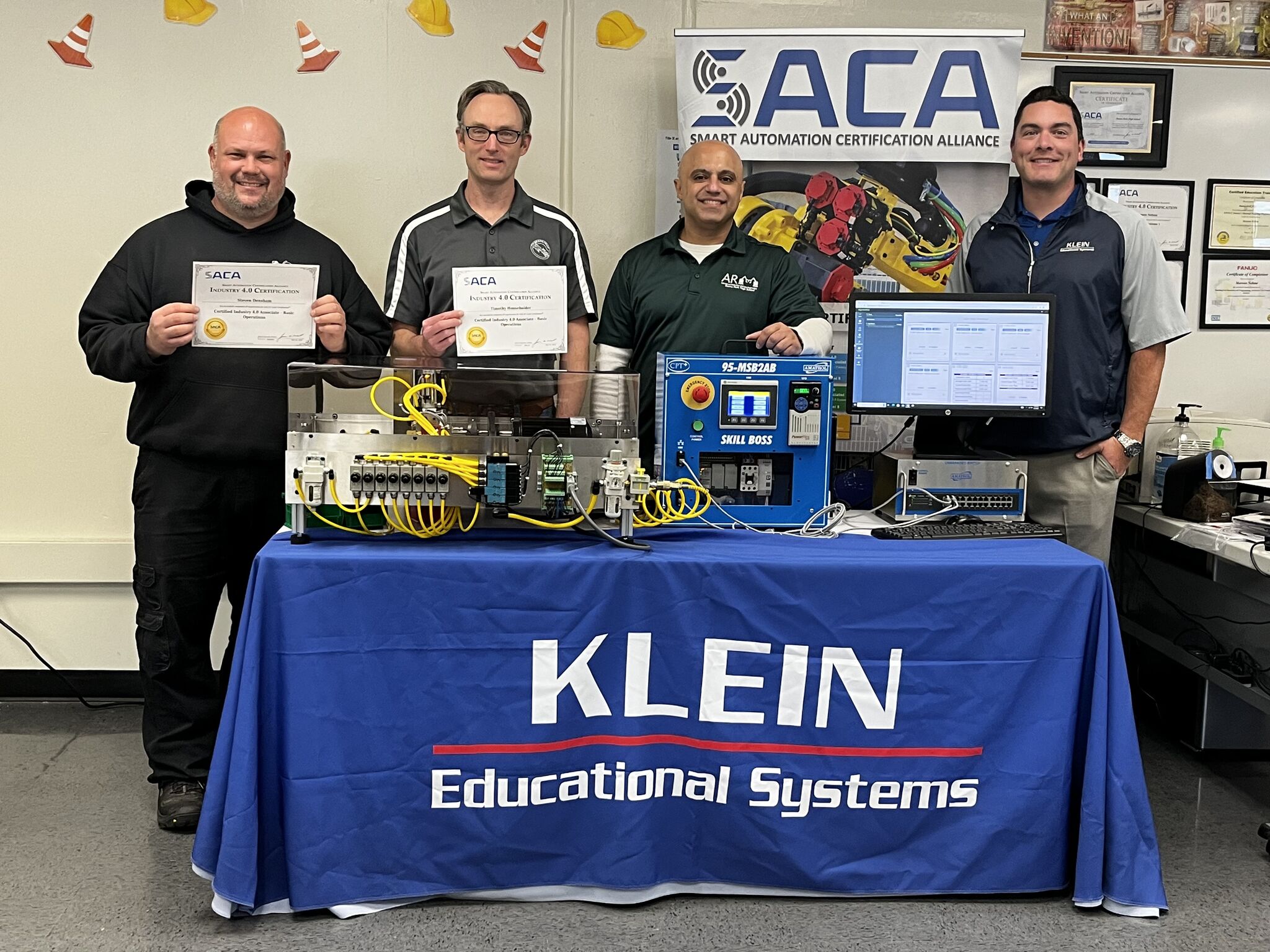
- Published in News, Technology
Believe the Hype: The Current State of Smart Manufacturing
It’s no secret that technology has changed our personal lives in ways few could have foreseen decades ago. But to what extent has technology changed the way we work?
People unfamiliar with the manufacturing sector might assume that factories where people work with their hands to make things might not be on the frontier of technological progress. However, they might be surprised to learn that the nation’s manufacturing facilities are driving forces when it comes to advanced technology.
There’s even a name for the technological revolution taking place throughout manufacturing: Industry 4.0. This term refers to the fact that we’re in the midst of a fourth Industrial Revolution, in which advanced automation technologies powered by Internet-connected systems are transforming the way modern manufacturing facilities operate.
This phenomenon goes by a variety of different monikers, including Smart Factory, the Industrial Internet of Things (IIoT), and Smart Manufacturing. It’s gotten a lot of attention over the past several years, leading some to question whether all the hype is justified.
After all, there are plenty of people who work in facilities that remain largely unchanged from the way they’ve always been. Is technology really transforming manufacturing the way the media portrays?
In a nutshell, the answer is yes. If you haven’t jumped aboard the Industry 4.0 train yet, it’s time to make your way to the station. Believe the hype. The current state of manufacturing is smarter and more automated than ever before, and it’s only growing and accelerating. As Blake Moret, Chairman and Chief Executive Officer of Rockwell Automation, recently noted, “We’ve experienced 20 years of evolution in 2 years.”
In this article, we’ll take a closer look at a few of the conclusions reached by experts at Rockwell Automation and Plex, in association with Sapio Research, in their Eighth Annual State of Smart Manufacturing Report (the “report”).
Challenges Spurring Technology Investments
Why are so many manufacturers choosing to invest in advanced smart automation technologies? That’s one of the questions the authors of the report looked at when developing questions for their survey of 1,353 global manufacturers across 13 of the top manufacturing countries.
What they learned is that many manufacturers see technology as a means to address one or more of the many challenges they face in today’s manufacturing environment. For example, “[s]killed labor – and labor of any kind – continues to be elusive across the globe. As manufacturers continue to seek opportunities for profitable growth, they’re finding that uncertainty in workforce availability is impacting quality, along with their ability to meet their customers’ needs and transform at pace. They are addressing this impact by using technology to extract data from their operations and assemble actionable insights.”
As manufacturers compete for skilled labor, they’re also competing with other manufacturers globally for customers and market share. The authors of the report “are also seeing how technology is helping the industry accelerate their agility and competitive differentiation.”
In fact, “manufacturers view technology as an advantage for improving quality, agility, innovation, and to attract the next generation of talent. Manufacturers expect to mitigate risk through technology tied to processes and people to build resiliency and drive future success.”
The Current State of Smart Manufacturing
Knowing that manufacturers are increasingly turning to advanced automation technologies to address the many challenges they’re facing, the authors of the report sought to gauge both the current levels of technology adoption and manufacturers’ plans for the future.
Before jumping into those findings, though, it’s important to understand what we’re talking about when we refer to “smart manufacturing.” According to the Manufacturing Enterprise Solutions Association (“MESA International”), “Smart Manufacturing is the intelligent, real-time orchestration and optimization of business, physical, and digital processes within factories and across the entire value chain. Resources and processes are automated, integrated, monitored, and continuously evaluated based on all available information as close to real time as possible.”
Manufacturers embracing smart manufacturing technologies are doing so “to mitigate risks, open up new opportunities, and remain competitive.” In terms of risk management, manufacturers face both internal and external risks.
According to the report, “[t]he top two ways respondents are addressing internal risk are to adopt new technology aimed at minimizing disruption from workforce or supply issues (53%) and to shift their operations to the cloud for purposes including increased cybersecurity protection and business continuity (50%). When it comes to external risks like inflation, supply chain, and workforce shortages, the top-ranking mitigation tactic is adopting new technology (44%).”
So exactly how many respondents are we talking about? The report concludes that “[e]ighty-four percent of respondents have adopted smart manufacturing or are actively evaluating solutions with the intention to invest in the coming year.” That’s an astounding adoption rate, which shows clearly the role these technologies play today and will continue to play in the future.
The report did note a difference in adoption rate based upon available revenue: “Companies with higher revenues are more likely to have adopted smart manufacturing technology, with a 58% adoption rate among respondents in the top third for revenue, compared to 40% among the lower revenue bracket.”
This finding is unsurprising, but the report indicates it “may indicate an opportunity for small and mid-size organizations to leverage an incremental, lower initial cost and resource approach to smart manufacturing with modular solutions that provide strong value and quick time to payback and ROI.”
With manufacturing becoming a more global phenomenon every year, it’s worth noting that investment in advanced automation technologies isn’t limited to the United States. Indeed, the top three countries with the greatest adoption rates of smart manufacturing technologies are “China (70%), the US (60%) and India (57%).”
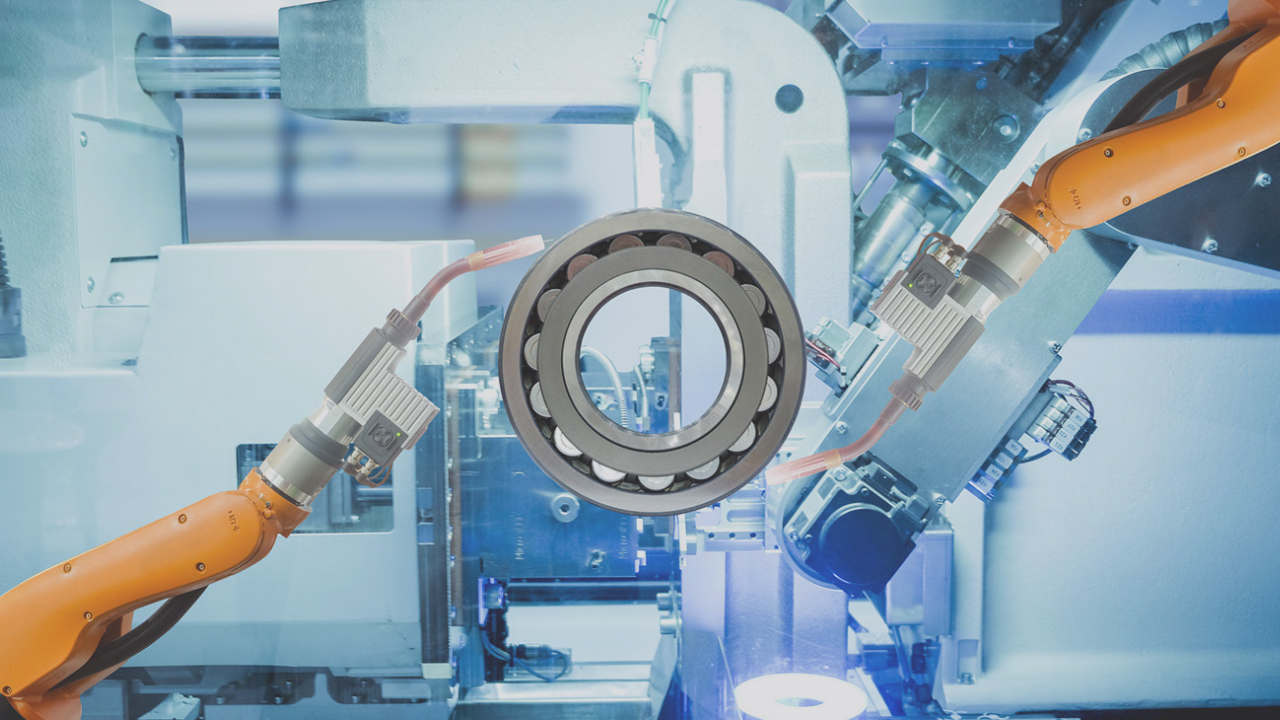
Smart Manufacturing Solutions Abound
So what exactly are these advanced automation technologies we’re talking about when we discuss smart manufacturing? The report summarizes a set of ten smart manufacturing solutions manufacturers are adopting:
- Smart Devices
“Smart devices are self and system-aware assets that acquire and process operating data – and monitor and report on asset conditions such as self-diagnostics and energy usage.”
- Manufacturing Execution Systems (MES)
“Manufacturing Execution Systems (MES) track and document the transformation of raw materials into finished goods, providing real-time production management to drive enterprise-wide compliance, quality, and efficiency.”
- Quality Management Systems (QMS)
“Quality Management Systems (QMS) standardize and automate quality documentation, processes, and measurements.”
- Computerized Maintenance Management Systems (CMMS)
“Computerized Maintenance Management Systems (CMMS) help organizations track and manage maintenance and repair activities for their facilities, equipment, and other assets in one place.”
- Asset Performance Management (APM)
“Asset Performance Management (APM) combines process, operational, and machine-level data through dashboards to monitor machine and plant health, ensuring optimal uptime, throughput, and maintenance needs.”
- Production Monitoring
“Production Monitoring provides seamless connectivity to machines on the plant floor, delivering transparent, real-time operational KPIs like OEE and dashboards to drive continuous improvements.”
- Distributed Control Systems (DCS)
“Distributed Control Systems (DCS) use decentralized elements to control dispersed systems, such as automated industrial processes or large-scale infrastructure systems.”
- Supply Chain Planning (SCP)
“Supply Chain Planning (SCP) combines data from multiple departments across the business or from outside market resources to sync demand and supply forecasting to improve inventory accuracy and production management.”
- Enterprise Resource Planning (ERP)
“Enterprise Resource Planning (ERP) automates front- and back-office processes, including financial management, revenue management, human capital, order management, billing, and inventory.”
- Analytics
“Analytics use data to solve manufacturing bottlenecks, optimize output and quality, and provide new insights.”
Contact SACA to Learn More about Smart Automation Certifications
As manufacturers incorporate these new advanced automation technologies, they’re finding they need workers with more advanced technical and technological skills than ever before. Unfortunately, there aren’t enough workers with these skills to fill the many roles available today, creating what is known throughout industry as the “skills gap.”
How can manufacturers find the highly-skilled workers they need so desperately? One promising solution is the development of industry-standard certifications that focus on connected-systems skills. The Smart Automation Certification Alliance (SACA) sits at the forefront of the effort to certify students and workers who demonstrate the required knowledge and hands-on smart automation skills employers so desperately need.
To learn more about Industry 4.0 certifications and how SACA can help both educational institutions and industry employers begin the task of bridging the Industry 4.0 skills gap, contact SACA for more information.
About Duane Bolin
Duane Bolin is a former curriculum developer and education specialist. He is currently a Marketing Content Developer for Amatrol, Inc. Learn more about Amatrol and its technical training solutions, including eLearning, here and connect with Duane on Amatrol’s Twitter, Facebook, LinkedIn, and YouTube pages.
- Published in News, Technology
Autonomous Mobile Robots on the Rise
“Transform and roll out!” This command probably echoes in the memories of those familiar with Optimus Prime and the Autobots from the Transformers cartoons, graphic novels, and Hollywood blockbuster movies. However, it could also be the rallying cry of manufacturing workers in smart factories all around the world today.
As advanced automation technologies continue to revolutionize how modern manufacturers operate, more and more facilities have embraced the use of autonomous mobile robots, commonly known as AMRs. Unfortunately, the implementation of AMRs seems to be moving at a faster pace than manufacturers can hire workers with the skills to operate, maintain, troubleshoot, and repair them.
This disconnect between the number of open manufacturing positions and the number of highly-skilled workers available to fill them is known as the “skills gap,” and it’s at its widest in those industries adopting advanced automation technologies that need workers with advanced Industry 4.0 “connected systems” skills.
In this article, we will take a closer look at AMRs and how their increasing popularity will increase the need for workers with smart automation skills. We’ll also detail how the Smart Automation Certification Alliance (SACA) can help ensure the next generation of workers possesses the skills they will need to succeed in the modern manufacturing workplace.
What is an Autonomous Mobile Robot?
When you think of a robot, what comes to mind? For some, the word “robot” may bring to mind images of the robot maid from The Jetsons cartoon or R2-D2 from the Star Wars movies. Others may envision large, stationary robot arms welding or moving heavy equipment on an assembly line.
Not surprisingly, autonomous mobile robots or AMRs are neither of these things. According to an Intel article, an autonomous mobile robot is “a type of robot that can understand and move through its environment independently.”
Different than automated guided vehicles (AGVs), which rely upon a specific track or operator intervention, “AMRs use a sophisticated set of sensors, artificial intelligence, machine learning, and compute for path planning to interpret and navigate through their environment, untethered from wired power.”
AMRs are finding homes in a variety of industries, including “[w]arehouses, logistical companies, agriculture businesses, and healthcare institutions.” Any business could benefit from using AMRs if it’s “looking for new and innovative ways to improve operational efficiency, enhance speed, ensure precision, and increase safety.”
For example, AMRs can enhance workplace safety by performing “tasks that would be harmful to or not possible for human workers. For example, they may be used to clean and disinfect areas for improved health and safety, transport contagious laboratory specimens in hospitals, carry heavy loads in industrial environments, or work in extreme conditions where humans cannot and should not be working.”
AMRs also offer users improved efficiency and productivity. For example, “[t]o enable employees to focus on high-value activities, such as customer support, businesses often use AMRs to assist with locating, picking, and moving inventory. When productivity is key, many businesses turn to low-powered AMRs that require less energy to function. Less power to operate means AMRs can recharge and return to work quicker, reducing downtime and keeping production and fulfillment going.”
What is Last-Mile Delivery?
The benefits of AMRs within a factory’s walls probably seem clear, but what about outside those walls? Can you imagine AMRs operating out in public? If that seems too much like science fiction, get ready to witness the future.
AMRs are becoming one the latest high-tech solutions to the problem of last-mile delivery. If you’re not familiar with that term, an Inside Intelligence article by Shelagh Dolan explains that “[i]n a product’s journey from warehouse shelf, to the back of a truck, to a customer doorstep, the “last mile” of delivery is the final step of the process — the point at which the package finally arrives at the buyer’s door.”
As Dolan notes, “[i]n addition to being a key to customer satisfaction, last mile delivery is both the most expensive and time-consuming part of the shipping process.” In a nutshell, “the last mile problem is inefficiency.”
For example, in rural areas, there can be multiple miles between stops. In the urban environment, however, stops may be very close together, but traffic congestion can slow the delivery process to a crawl.
Because e-commerce continues to grow year after year and consumers increasingly expect both fast and free shipping, last-mile delivery costs have grown substantially, accounting for more than half of the total cost of shipping in most cases.
This is why more and more companies are “looking to implement new technologies and drive process improvements” to solve the last-mile delivery problem. Dolan concludes that, “with the ongoing integration and enhancement of automation across industries, it’s likely we’ll start seeing delivery robots, drones, and self-driving vehicles making many of these drop-offs in the not-so-far future.”
A recent Material Handling & Logistics article echoes that conclusion: “[l]ast-mile delivery revenues [by AMRs] are forecasted to grow from $70 million in 2022 to US$670 million in 2030, according to new research from ABI Research. Additionally, the value of those parcels delivered by Autonomous Mobile Robots (AMRs) could reach $3.3 billion by 2030.”
“The use of automation will continue to grow as governments increase regulatory approvals, more companies scale revenue-producing operations, and both consumers and businesses find value in low touch, quick delivery of their items,” explains Adhish Luitel, senior analyst, Supply Chain Management & Logistics at ABI Research.
Indeed, “[a]s these autonomous vehicles grow from university campuses to the suburbs and city streets, companies will be able to judge not only their financials but also the response from the larger communities as they adjust to sharing their sidewalks, streets, and crosswalks with these efficient machines.”
With the anticipated growth of AMRs both inside and outside the walls of industrial facilities nationwide, it’s going to be more important than ever for employers to find workers with the skills to operate, maintain, troubleshoot, and repair these advanced automation technologies. That’s why industry-standard certifications addressing advanced “connected-systems” skills will be a key tool for both employers and future workers.
Why are SACA Certifications Important Today?
The Smart Automation Certification Alliance (SACA) sits at the forefront of the effort to certify students and workers who demonstrate the required knowledge and hands-on smart automation skills employers so desperately need.
SACA’s certifications were developed in conjunction with industry partners who could speak from experience about their needs when it comes to workers able to work alongside a variety of advanced automation technologies.
For example, SACA offers a wide variety of certifications in important industrial subject matter areas, including: electrical, motor control, programmable controllers, mechanical, pneumatics, hydraulics, automation, Industry 4.0 technologies, robotics, electronic sensors, smart factory operations, process control, Ethernet communications, networking, data analytics, and predictive maintenance.
For workers, SACA certifications can help market their smart automation skills to potential employers. For those employers, SACA certifications represent confirmation that a worker has the skills to hit the ground running in the workplace.
To learn more about Industry 4.0 certifications and how SACA can help both future workers and industrial employers begin the task of bridging the Industry 4.0 skills gap, contact SACA for more information.
About Duane Bolin Duane Bolin is a former curriculum developer and education specialist. He is currently a Marketing Content Developer for Amatrol, Inc. Learn more about Amatrol and its technical training solutions, including eLearning, here and connect with Duane on Amatrol’s Twitter, Facebook, LinkedIn, and YouTube pages.
- Published in News
Wearables Leverage Smart Technologies to Improve Safety and Productivity
Long, long ago, in a land that time has forgotten, there used to live human beings who were not connected to the Internet 24/7. They did not carry a telephone, camera, calculator, newspaper, encyclopedia, radio, calendar, clock, map, photo album, and book simultaneously on their persons.
What a dumb world they lived in! Does that sound harsh? Maybe, but what else would you call the opposite of the “smart” world we live in today? The example above seems silly, but 30 years ago the thought of having access to all those things — and more! — in the palm of your hand would’ve seemed just as crazy.
Today, smart technology is everywhere you look. It’s in our smartphones and other electronic gadgets. It’s in our homes and schools. We’re even wearing smart technology these days. From smart watches to fitness trackers, “wearables” are more popular than ever.
While many of the first uses of smart technologies in wearables focused on improving personal physical fitness, clever developers have created new devices for the workplace. If your workplace doesn’t already use some form of wearables for employees, it likely could in the near future.
In this article, we’ll take a closer look at the important role wearables are playing in today’s advanced manufacturing and logistics workplaces. Read on to learn how smart technologies are making employees safer and workplaces more productive and efficient.
What are Wearables?
According to Investopedia:
“Wearable technology, also known as ‘wearables,’ is a category of electronic devices that can be worn as accessories, embedded in clothing, implanted in the user’s body, or even tattooed on the skin. The devices are hands-free gadgets with practical uses, powered by microprocessors and enhanced with the ability to send and receive data via the Internet.”
When you hear the word “wearables,” smart watches and fitness trackers you wear around your wrist are probably the first devices that come to mind. However, as the definition above reveals, developers are becoming more and more creative when it comes to wearable technology.
Having access to your smartphone features on your watch and keeping track of the number of steps you’ve taken both have obvious benefits. But what about in the workplace? Is there really a need for these types of devices on the job?

After all, aren’t robots taking over anyway? Will there even be factory jobs for people in the future? Won’t it just be all automation? While automation certainly plays an increasingly important role in modern industrial facilities, the robot takeover has been greatly exaggerated.
Sure, some low-skill positions have been eliminated by the use of robots and other automated technologies, but there are still hundreds of thousands of open manufacturing jobs that employers are having a hard time filling. Moreover, the more automation there is, the more highly-skilled workers are needed to operate, maintain, troubleshoot, and repair that equipment.
As Jessica Lin notes in a Forbes article, “we have 30 to 50 years until we reach a world of full automation. It’s very hard to replicate the flexibility, speed and dexterity of a person. That’s why Amazon has a lot of robots, but still hired more than 425,000 people this year.”
People remain key assets today more than ever. Because of their importance, employers are now leveraging smart technologies in the form of wearables designed to protect and improve the everyday work experience for employees.
How Can Wearables Improve Safety in the Workplace?
Workplace safety: it’s an issue so fundamental that we tend to overlook its importance when we focus on seemingly bigger issues, such as improving efficiency and productivity via advanced automation technologies. However, employers would be wise to engage their employees in keeping safety first and foremost in their minds.
After all, workplace injuries greatly affect the bottom line. In her article, Lin highlights the impact felt by businesses as a result of work-related injuries:
“Every year in the U.S., nearly three million workers are injured on the job. The most frequent injury across this workforce are musculoskeletal injuries, which are often caused from cumulative wear and tear of the body, along with improper body mechanics. Musculoskeletal injuries are on average the longest injury to recover from, and usually the most debilitating in the long term. These injuries have huge financial implications – $170 billion was lost on workers’ compensation in 2018, and in an industry with high turnover, this means companies are spending unnecessary time and money to replace and retain employees.”

As Pat Stoik advises in an Industry Today article, “Employees are the best and first line of defense against safety incidents, which always disrupt business in some way…A well-executed safety culture not only ensures employees’ well-being, but also prevents disruptions and delays, saving companies money.”
How can companies accomplish this? One answer for food and beverage giant PepsiCo is the use of wearables. As Max Garland points out in a Food Dive article, “Frito-Lay’s need to fill 5,000 positions across its U.S. manufacturing sites to meet heightened demand has underscored the importance of keeping frontline employees healthy and able to work. Using wearables is one way to do that.”
According to Garland, “Thousands of workers at 34 Frito-Lay manufacturing and distribution centers cut back on improper lifting and posture when using Kinetic’s Reflex wearable device… [that] recognizes improper moving and lifting techniques and alerts the user with a vibration.”
In her article, Lin notes that Kinetic is “a New York-based company building wearable technology to reduce workplace injuries for industrial workers: everyone from last mile delivery drivers (who make up 40% of Kinetic wearers) to shipping, construction, manufacturing, and logistics operators.”
To date, companies using Kinetic’s wearables have experienced great success. As Garland notes, “[d]ata from the devices allowed management at Frito-Lay’s Kern Plant in California to determine what areas of the facility frequently featured improper movements…[and] to retrofit equipment and modify workspaces to reduce worker risk…reducing strain and sprain injuries by 19% YoY.”
Lin adds, “Since launching in 2014, Kinetic can now be found on tens of thousands of workers across the country, and customers include Pepsi, Iron Mountain, among others. On average, Kinetic reduces injury rates by 54%, lowers lost work days by 88%, and enables managers the insights necessary to create a safer working environment.”
Kinetic is not the only company producing wearable devices for the workplace. Many other companies have developed wearables that can improve worker safety in a variety of ways. For example, in a JourneyApps Blog article, author Leon van Heerden notes, “Wearables can now tell you which surfaces are too hot to touch, when machinery is malfunctioning, or even when conditional hazards, like spilled fluids, are present.”
Moreover, he points out that wearables can also “warn workers, and their management, when someone is physically overworking themselves and that they need to take a break before they become fatigued and make a mistake that can lead to an injury.” Importantly, improved safety isn’t the only significant impact wearables are making in the industrial workplace.
How Can Wearables Increase Productivity in Industry?
Reducing injuries and time away from the job positively impacts the bottom line, but businesses that have adopted wearables in the workplace have also learned how to use them to increase efficiency and drive greater productivity.
For example, van Heerden writes, “There are many use cases where businesses can improve efficiency: technicians can be connected to vital information about the equipment they are servicing; field workers can be given access to information on inspections; employees can be tracked in challenging environments.”
He adds, “Workers in the field, factory, or warehouse can now access information through wearables, often replacing a touch interface with one that is voice-driven, allowing their hands to remain free for the job at hand.”
Another area in which wearables can make a huge impact is employee training. General Motors uses Google’s Glass to train new hires — hands-free and on-the-go — on an active production line. Alternatively, wearables can also be used for both “immersive task simulations” and “three-dimensional training on how various products work through the help of HMTs and assisted reality,” according to van Heerden.

Will the trend of wearables in the industrial workplace continue? Authors like van Heerden believe it will: “Wearable technology will continue to grow within the industrial sector as it has clearly demonstrated its benefits. Productivity is increased, safety is improved, errors are reduced and training is more meaningful when wearable technology is incorporated.”
Recent research supports his view. Gartner predicts “total wearable sales of $81.5 billion in 2021, while a report by Research and Markets predicts the industrial wearable devices market will exceed $2.78 billion by 2024, increasing annually at a rate of 9.2%.” The same appears to hold true for the logistics industry: “a 2018 study logistics association MHI predicted that within five years, 70 percent of warehousing and distribution facilities would adopt wearables.”
Industry would not be seeing these benefits without the cooperation of willing employees. In his article, Garland notes that employees have readily embraced the use of wearables in the workplace, because “it empowers them to talk with management about how a facility could be improved.” As their behavior in the workplace changes in response to data gathered from wearables, employees can initiate conversations that lead to meaningful changes that improve their jobs.
Contact SACA to Learn More about Smart Automation Certifications
Wearables are just one of the many forms of new advanced, “connected” technologies that characterize what’s commonly known as Industry 4.0. These technologies, as a group, also go by a variety of monikers, including Smart Factory and the Industrial Internet of Things (IIoT).
Today’s workers need more advanced technical and technological skills than ever before. Unfortunately, there aren’t enough workers with these skills to fill the many roles available today, creating what is known throughout industry as the “skills gap.”
How can modern businesses find the workers they need? How will educational institutions teach the skills modern industry needs? These are questions that demand answers, and one promising solution is the development of industry-standard certifications that focus on connected-systems skills. The Smart Automation Certification Alliance (SACA) sits at the forefront of the effort to certify students and workers who demonstrate the required knowledge and hands-on smart automation skills employers so desperately need. To learn more about Industry 4.0 certifications and how SACA can help both educational institutions and industry employers begin the task of bridging the Industry 4.0 skills gap, contact SACA for more information.

- Published in News
Helpful tips on how to build a smart automation résumé
To view a multimedia version of ‘Helpful tips on how to build a smart automation résumé‘, please click here.
New year, new you – right?
With the end of 2020 approaching quickly, many are circling Jan. 1, 2021 as an opportunity to improve their happiness and wellbeing. For some, that signals a career change – a way to improve on their daily professional grind.
While COVID-19 has made the job market volatile, there are still careers out there with jobs waiting for people to apply for them. And some of those jobs happen to fall into a sector known as Smart Automation.
What is Smart Automation?
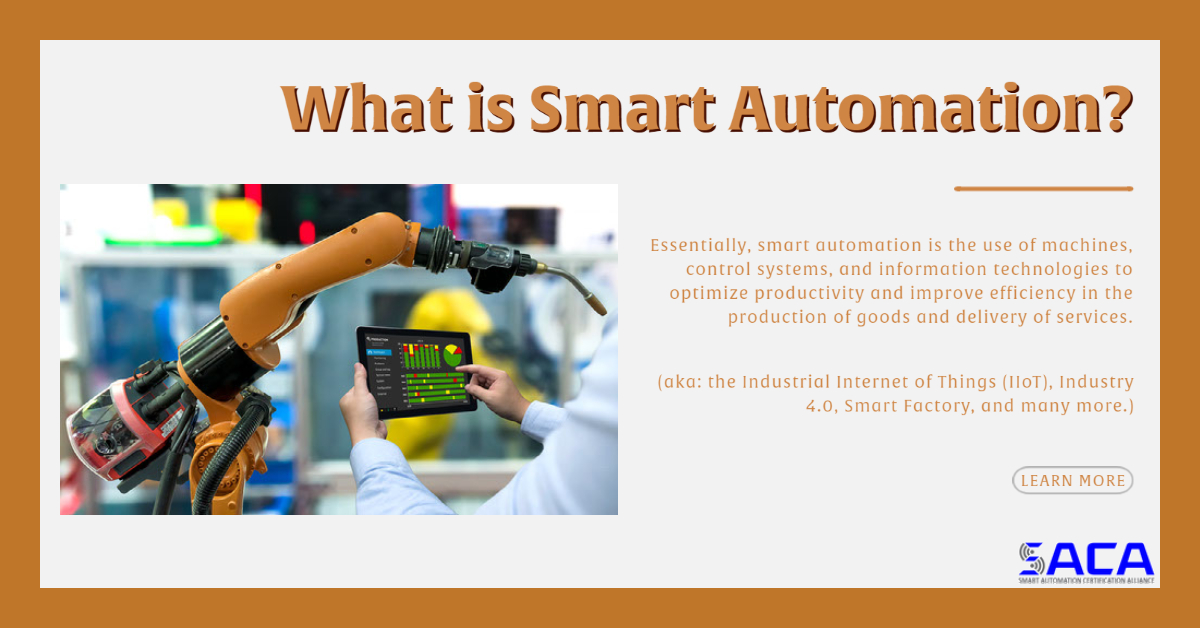
While some know the term as “smart automation”, it goes by many different monikers: the Industrial Internet of Things (IIoT), Industry 4.0, Smart Factory, and many more.
Essentially, smart automation is the use of machines, control systems, and information technologies to optimize productivity and improve efficiency in the production of goods and delivery of services. From building automobiles to sewing buttons on a shirt, it is used all around the world to improve the speed and quality of manufacturing. However, what makes the automation “smart” is a lot like the same idea used when describing smartphones: we are connecting to the Internet of Things (IoT), which allows devices to communicate with other devices via the Internet.
This has ushered in a brand new way of manufacturing, which many are viewing as the Fourth Industrial Revolution – which explains the name Industry 4.0. Smart automation holds the potential for a massive impact on industrial efficiency and proficiency. By combining cyber-physical systems, automation, and the Internet of Things, companies can begin to create a smart factory environment, which could include a team of robots communicating with each other (and human workers) to report on a wide variety of information, such as cycle times, mechanical breakdowns, predictive maintenance, and more.
Why should I be interested in a career in Smart Automation?
While the real boost behind smart automation involves robots and self-driving vehicles, it does not leave human workers out in the cold. As an increase in usage of robots happens, low-skill assembly line-type jobs will begin to fade out, making ways for new careers that have never existed before.
The demand for these highly-skilled workers that can program, analyze, and maintain many parts of these complex systems is so tremendous that companies are having difficulty finding candidates to accept these careers in manufacturing, which has led to a sector-wide hiring struggle, known as the Skills Gap. This means these jobs – many of which are high-paying – are going unfilled due to the lack of qualified workers.
But smart automation doesn’t just live on an assembly line floor. In fact, thanks to the use of smart sensors, smart devices, and other new cutting-edge technologies, which possess the ability to create an enormous amount of data to be monitored and shared via cloud technology, many of the jobs available today require just as much knowledge on IT and cyber-security as any other typical manufacturing skill.
How do I build a résumé for jobs that don’t exist?
Like most jobs, you don’t pick a career by simply liking its name or title: you pick your career based on the skills that you’re good at, or enjoy doing. So with that in mind, here are four tips on how you can improve your smart automation résumé:

Tip #1: Spotlight on your “smart” skillset
By highlighting your “smart” skills – and highly-coveted personal skills like problem solving, critical thinking, and others – as opposed to a particular job’s title, you will be more adept to finding the ideal job for your skillset.
So when constructing your résumé, put an emphasis on your “smart” skillset that showcases you have the specific knowledge and know-how for the skills they are looking for. According to a recent study by Deloitte, many of the future jobs will revolve around these skills:

Tip #2: Include a focused professional summary statement
When introducing yourself through your résumé’s Professional Summary section, include any pertinent industry-needed skills that were called out in the company’s job listing. (Called “value proposition”, highlighting a collection of skills you can provide curated to a particular business or position makes you a more attractive candidate in the process.)
Be straightforward in explaining your skillset, and what you can offer this specific company. Not only will it showcase your most important attributes as early in the review process as possible, but it will also prove to the company that you took the time to study the job listing, not just submitting résumés blindly without reading.
Also, focus on strong character traits that prove your experience, and back it up with accomplishments. Remember to show, not just tell, examples of how you can improve their bottom line. If warranted, consider a compelling statement that describes your current (or previous) profession, especially if they include the “buzzword” skills a company is specifically looking for.

Tip #3: Don’t overlook your training – it matters!
Whether it’s your first career in industry, or you’re retooling for a future position or promotion, training in smart automation matters. From the bedrock knowledge of automation, to understanding all of the safety protocols around these automated machines, having industry-relevant training is critical for positions like these.
So when compiling your previous academic or professional experience, make sure to list any related classroom experience, as well as specific courses that pertain to the position you’re applying for – remembering to focus on your skillset.
If it applies to you, consider adding any apprenticeships, mentorships, or other non-traditional means of training. Don’t overlook any of your training, no matter how menial you might think it is.

Tip #4: Certifications can make (or break) your job search
Let’s be honest here: if Candidate A and Candidate B both have similar skillsets, experience, and recommendations – but only one of them holds an industry-recognized Industry 4.0 certification – it should be pretty clear who is going to get the first job offer.
Most Industry 4.0 or Smart Certifications can showcase to businesses that you are trained under the standard guidelines established by industry leaders. In fact, most companies will prioritize candidates that hold an official industrial certification from an industry-recognized institute, like SACA, for example.
Since these certifications play such a crucial role in the hiring process, consider upping your training regime to include industry-recognized smart credentials.
Getting involved with Industry 4.0 is a “smart” bet
In summary, it’s simple: Industry 4.0 jobs are aplenty, high-paying, and there for the taking.
But they’re not for everybody. These jobs take a specific skillset that rely heavily upon critical thinking and problem-solving. The challenges, though, should not dissuade someone from pursuing a career in smart automation. Instead, it highlights the pressing need for qualified workers in this field of work, and the unlimited possibilities these positions could bring to a world of “smart” manufacturing.
- Published in News
Top 5 Future Smart Automation Careers in Manufacturing
Oh, how five years can change things.
Turning the clock back all the way to 2015, gasoline had fallen under $3 nationally for the first time in four years, NASA was confirming the presence of water on Mars, and the smash-play Hamilton was the hottest ticket on Earth (you know, back when we could still go to concerts…).
Even manufacturing of those times now feels slightly antiquated. Promises of big data driving efficiency and predictive maintenance technologies, which were introduced on a national scale in 2015, are now commonplace around Smart Factories. Today, more efficient strategies are practiced by companies, leading to a manufacturing boom – another prediction-come-true from 2015.
While we could spend time reminiscing about the “ol’ days”, innovation doesn’t take a break. With more products being created daily than we’ve ever experienced before, it only makes sense for manufacturing to keep focused on improving production for future endeavors.
And it begs the question: where do we see manufacturing five years from now? Based on its history, changes are expected, according to Deloitte. Specifically, they predict several important themes will be reflected in these changes, including:
- Putting Humans in the Loop: Organizations are working harder to keep humans in the loop, such as rethinking work architecture, retraining people, and rearranging the organization to leverage technology. The hope is to not only eliminate routine tasks and cut costs, but create value for the customers (and meaningful work for the employees).
- Expanding Digital and “Soft” Skills: Despite the rise of automation, and technology replacing many mundane tasks, manufacturing requires human workers to ensure that everything runs smoothly. The essential human skills deemed most useful over the next decade include critical thinking, creativity, and people management.
- Leveraging the Digital Toolbox: Manufacturing workers are becoming more reliant upon digital tools, such as collaboration platforms, work-based social media, and instant messaging, to effectively complete their work.
In addition to these themes, Deloitte also anticipates five future skillsets that each manufacturing worker should possess, including being proficient in: Technology / Computer, Emerging Digital Technologies, Programming for Robots / Automation, Working with Tools and Technology, and Critical Thinking.
So how can these themes and skills work in combination to create future jobs?
According to Deloitte:
“As digital transformation and the Fourth Industrial Revolution continue to redefine manufacturing jobs of the future, leaders and workers alike need to embrace a work environment that is expected to blend advanced technology and digital skills with uniquely human skills, to yield the highest level of productivity. Understanding how work might change can help the industry as a whole prepare for a future that promises to be transformative.”
With that transformative future comes a new onslaught of smart careers – many of which have been created as a direct correlation to the ever-changing industry. In this article, we will highlight five of the jobs that Deloitte has tabbed as the most promising future smart automation careers in manufacturing, as well as what that position could potentially look like.
Job #1 – Digital Twin Engineer

SUMMARY: A digital twin engineer creates a virtual representation of both the physical elements, as well as the dynamics of how an IoT-connected product operates and interacts. Simply put, a digital twin engineer makes it possible to virtually see inside any physical asset, system, or structure to optimize design, monitor performance, predict maintenance, and improve the overall experience.
Used throughout a wide range of industries, digital twin engineers rely upon their engineering tooling to integrate necessary digital elements to produce the high-quality product. In addition, they act as a working link between the product twin and the performance twin, which can help enhance collaboration with customers, accelerate innovation, design smarter products, and create new services.
RESPONSIBILITIES: Using 3D software and simulations, a digital twin engineer will create digital twins to measure product performance throughout a variety of conditions. The insights discovered through the data help design new products and business models. Engineers also use machine learning, real-time usage, and performance data to optimize product performance and service.
SKILLS NEEDED: In creating virtual replicas of major industrial products, as well as helping companies predict and respond to customer problems using real-time data analysis, digital twin engineers need to be well-versed in simulations, analytics, and software development. Systems engineering, as well as research and development, are also critical.
Job #2 – Smart Factory Manager

SUMMARY: A smart factory manager is a jack-of-all-trades, so to speak. From production and quality, to IT and cyber responsibilities, a smart factory manager takes on an expanded, and often times unique, role of integrating advanced manufacturing, securing connectivity, and understand data analytics to drive a new level of overall equipment effectiveness, or OEE.
The goal of the smart factory manager is to identify data patterns that can help predict quality issues, as well as direct actions in response to these insights. In addition, they will leverage predictive maintenance analytics to identify issues before they happen, and direct preventative maintenance to address future issues.
RESPONSIBILITIES: A smart factory manager must be able to identify and aid in the addition of advanced technologies that enable self-optimization. They must be able to build a variety of automated manufacturing capabilities, such as robot cutting, 3D printing, and more. Finally, they are responsible for managing the installation, operations, and maintenance of all levels of the smart factory solutions “stack” that delivers continuous connectedness and ensures cybersecurity protocols are followed.
SKILLS NEEDED: Being skilled in applied technology, automation, and connectedness are a must for smart factory managers. In addition, operational excellence, deep learning, and innovation are also key to finding success in the field. Digital prototyping and client management are also plusses.
Job #3 – Robot Teaming Coordinator
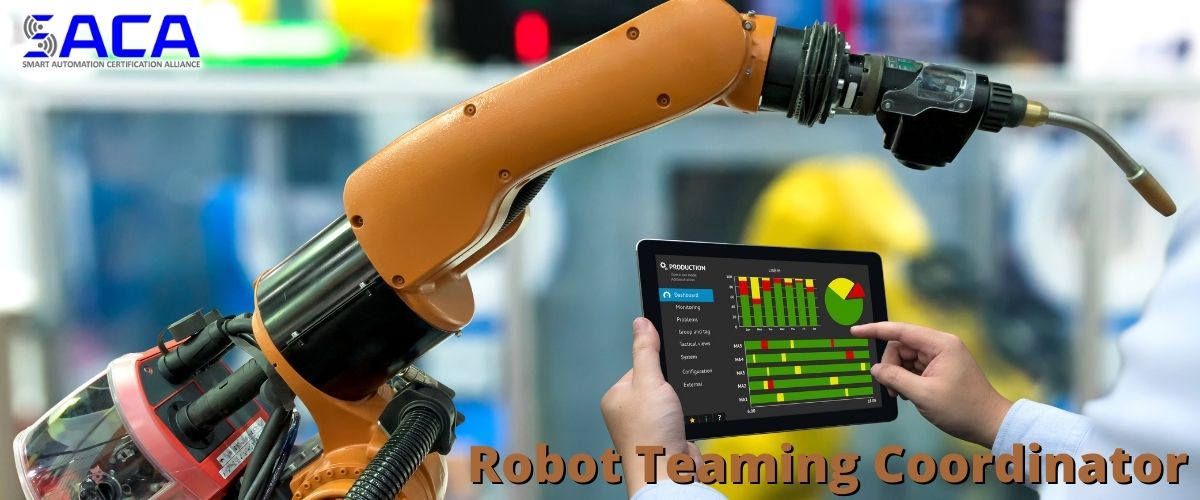
SUMMARY: With increased automation comes a larger need for robots. And robots, like any other industrial component, needs to be able to effectively perform its predetermined tasks. As a Robot Teaming Coordinator (RTC), it is their task to oversee robots that interact with humans to enable a human rapport with robots, ensuring optimal human-machine interactions.
Generally, the RTC is responsible for monitoring robot performance, and giving feedback to programmers to perfect robot value. However unlike robot programmers, a robot teaming coordinator are often not experts in programming languages, but should have the knowledge to understand how robots are supposed to behave in work environments.
RESPONSIBILITIES: In addition to observing and evaluating robot performance, an RTC is responsible for sharing its feedback with robot programmers, recommending areas for improvement. They will train human team members to help them work more collaboratively with robots, as well as work in tandem with robot coordinators from other departments to identify opportunities to enhance productivity. Finally, all of those results are delivered against key performance indicators to view overall customer experience, improvements in productivity, and more.
SKILLS NEEDED: An RTC needs to be proficient in robot behavioral analysis by enabling a collaborative human-robot working environment, which applies a mixture of digital, social, and human skills to help humans and robots leverage each other’s strengths and improve productivity. This means a robot teaming coordinator needs to be well-versed in human-machine collaboration, as well as robot management.
Job #4 – Smart Safety Supervisor
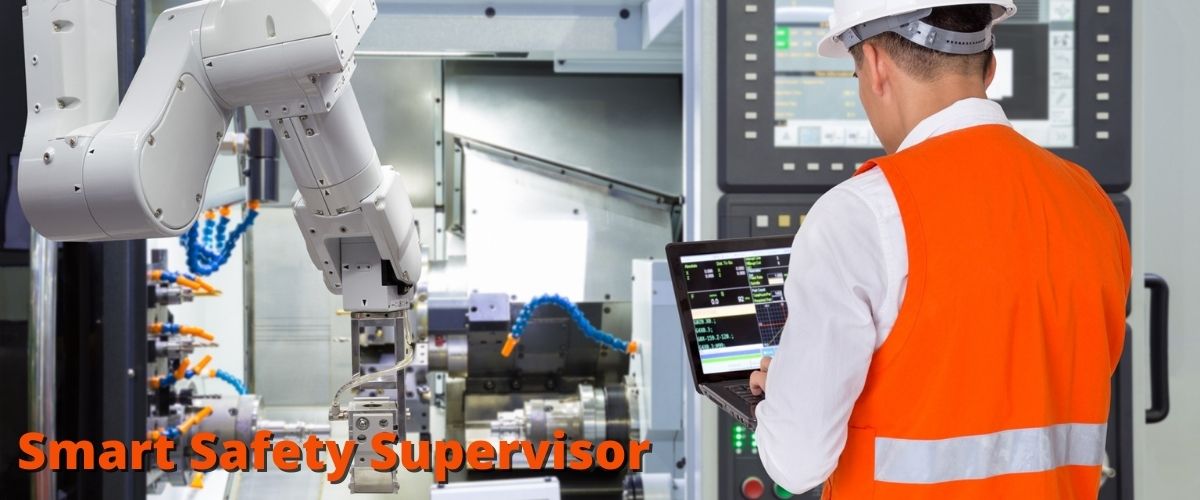
SUMMARY: In most workplace environments, safety is the number one concern. That’s no different in a Smart Factory – only this time, it’s the Smart Safety Supervisor who is responsible for overseeing proper safety procedures are being utilized. A Smart Safety Supervisor works with operational, logistics, and technology teams to ensure safety, as well as finding new synergies that can improve the safety of workplaces.
With Smart Factories dealing with autonomous equipment, unmanned drones, and advanced materials, a Smart Safety Supervisor needs to be fluent in advanced technologies, and match those applications – such as smart helmets or augmented reality (AR) glasses to help create a safe and efficient work site. They will also use their broad knowledge of regulations, Environment, Health & Safety (EHS) standards, and available technologies to help companies develop technology implementation road maps, or help leverage the digital twin of a construction site to oversee health and safety of workers and machines.
RESPONSIBILITIES: When it comes to keeping workers safe, a Smart Safety Supervisor has a laundry list of responsibilities. From identifying new technologies to meet set safety targets, to formulating safety procedures and plans to reduce potential safety hazards, a Smart Safety Supervisor will be responsible for taking all of the necessary steps to ensure workplace safety. The job also includes incorporating specialized risk management principles between machines and humans, supervising safety specialists, and acting as a field safety inspector on incident investigations.
SKILLS NEEDED: The most necessary skill is having an advanced working knowledge of construction safety, safety management systems, and occupation and health regulations. Smart Safety Supervisors are skilled in EHS, workplace inspection, and risk assessment, as well as understanding digital tools and technologies to aid in keeping everyone safe. Finally, having experience developing and implementing multiple health and safety programs for various projects is a plus.
Job #5 – Smart QA Manager

SUMMARY: A “smart quality assurance (QA) manager” manages product quality using digital technologies. That means a smart QA manager will oversee an ecosystem of machines and work center sensors, artificial intelligence (AI), and virtual reality (VR) support technologies to proactively detect quality escapes and machine maintenance issues, as well as develop solutions to address those root causes of quality issues.
From developing requirements for AI and machine-learning (ML) algorithms that identify products defects as early as possible, to reducing the number of defects per part produced, the main task of a smart QA manager is to minimizes production downtime, and maximize productivity by reducing manual inspection.
RESPONSIBILITIES: A smart QA manager will be looked upon to work with the facility manager to develop and maintain the production schedule, as well as plotting historical data to develop predictive quality controls and detection algorithms. In addition, they will be responsible for conducting quality issues root cause analysis, providing corrective actions, and identifying new technologies to incorporate into QA systems.
SKILLS NEEDED: An experienced QA manager is trained in leveraging smart technologies to reduce the number of defects per part produced, with goals to enhance overall productivity. Other useful skills include operational excellence, innovation, automation, and digital prototyping. Like all future smart positions, it also requires a passion for deep learning.
Need Help Certifying Your Workforce for Smart Automation? Consider SACA!

With all of these future careers on the horizon, industry-endorsed Industry 4.0 certifications will become even more valuable. That’s why the Smart Automation Certification Alliance (SACA), a non-profit organization, has made it our mission to develop and deploy Smart Certifications for a wide range of industries.
Thanks to the help of our partners, SACA has created certifications that are industry-driven, developed for industry by industry. They are developed through a rigorous process that begins with the creation of truly international skill standards, endorsed by leading experts in Industry 4.0 technologies throughout the world.
SACA’s Smart Automation certifications use a modular structure to enable them to fit a wide range of individual needs, industries, and educational environments, and are available in three categories – Associate, Specialist, and Professional. Each certification is stackable, allowing individuals to start with one certification and add other certifications to customize their documented skills.
All SACA certifications are occupationally focused, so they prepare individuals for specific careers in the world of Industry 4.0. If you would like more information into SACA’s world-class Smart Certifications, please visit our website!
- Published in News
Macomb Community College Joins SACA to Provide Students with Industry 4.0 Certifications
LOUISVILLE, KY—AUGUST 17, 2020
The Smart Automation Certification Alliance (SACA) is pleased to announce that it has recently entered into an agreement with Macomb Community College and ATS Midwest to support the college’s efforts to align its education and training to meet the realities of Industry 4.0. Students completing Macomb’s advanced manufacturing programs will soon earn SACA certifications, giving them a competitive advantage in today’s job market.
Today’s students face a far different world of advanced manufacturing than existed a decade ago. While automation technologies have been commonplace for many years, the Internet has brought about a convergence of new “connected” technologies that is revolutionizing how products are made.
Known as the Fourth Industrial Revolution or Industry 4.0, this latest disruption of the advanced manufacturing world is resulting in reduced downtime and increased quality, productivity, and overall efficiency in industries of all kinds thanks to advanced technologies that make up what is known as the Industrial Internet of Things (IIoT).
IIoT technologies include such things as advanced robotics, machine learning, artificial intelligence, autonomous vehicles and machines, cloud-based data analysis, and cybersecurity. As companies increase their use of networks and Internet technologies, they are connecting more devices, from smart sensors to smartphones.
As a result, these highly-connected systems require new skills in almost every occupation. To succeed in an Industry 4.0 environment, current workers and today’s students must learn to interact with software, data, networks, and smart devices.
While there are many certifications available today that address isolated competencies, from machining to maintenance and information technology (IT), SACA certifications are different. SACA’s Industry 4.0 certifications certify “connected systems” skills that address the integration of the many types of advanced manufacturing technologies with Industry 4.0 technology.
SACA’s Industry 4.0 certifications have been developed for industry by industry through a rigorous process that began with the creation of truly international skill standards. These standards have been endorsed by leading experts in Industry 4.0 technologies around the world.
Working with forward-thinking institutions like Macomb will enable SACA to accomplish its vision to provide highly-affordable, accessible Industry 4.0 certifications that significantly increase the number of individuals who possess the skills represented by these credentials.
The result will be an increasing number of students prepared to be successful in an Industry 4.0 world, as well as more companies that have the highly-skilled workers they need. Don Hutchison, Macomb’s Dean of Engineering and Advanced Technology, agrees:
In southeast Michigan, industry already needs employees who understand how advanced manufacturing systems integrate. At Macomb, we are listening to industry and creating training for individuals and industry that meets the challenges and opportunities of Industry 4.0. Arming Macomb’s graduates with SACA certification signifies to employers that they are prepared to successfully navigate the complex, integrated nature of today’s manufacturing environment.
Fortunately, Macomb also enjoys the support of local industry. Tom Kelly, Executive Director and CEO of Automation Alley, Michigan’s leading manufacturing and technology business association and Industry 4.0 knowledge center, supports Macomb’s vision:
It is encouraging to see Macomb Community College commit to Industry 4.0 training, which will help to ensure industry receives graduates with employable skills. Today, technology is moving at an accelerated pace which requires a new set of working skills. If our state is to keep pace and maintain a global leadership position in manufacturing, we must transform and continuously develop our talent pipeline.
SACA looks forward to a long relationship with Macomb as they, together with industry partner ATS Midwest, begin a thorough review of all of the college’s advanced manufacturing programs to ensure SACA certification requirements are incorporated into the programs’ core curricula. The parties will also be reaching out to local industry to confirm that SACA certification requirements reflect the skills needed by industry. For more information about SACA and how its Industry 4.0 certifications can prepare your students for the jobs of the future, visit SACA.org or contact SACA Executive Director Jim Wall.
- Published in News
Indiana Governor’s New Initiative Offers Free SACA Silver Certifications for Hoosiers
During Indiana Governor Eric Holcomb’s June 5, 2020 press conference, a new state initiative was announced that will offer 10,000 free credentials to Indiana residents that have been dislocated from their jobs due to the COVID-19 pandemic. The Smart Automation Certification Alliance (SACA) is one of the organizations offering credentials to displaced Hoosier at no cost. SACA’s certifications are task-based and nationally recognized in preparing individuals for rewarding careers working with advanced manufacturing and Industry 4.0 technologies.It’s no secret the immense role that Industry 4.0 is expected to play in the future of industrial manufacturing.
These courses can be taken online and feature virtual simulation of industrial applications, which make them ideal for preparing users for the workplace. The online delivery also allows users to practice social distancing guidelines to help prevent the spread of Coronavirus.
Ivy Tech will coordinate enrollment of new students while Amatrol and Aidex will help to promote this opportunity to displaced Indiana residents seeking a new career path. Amatrol will also provide free access to its Learning Management System (LMS) for students enrolled in this program.
When a student completes one of the six courses, they will be eligible to sit for the associated SACA Silver Credential. SACA Silver Credentials are completed solely online while Gold Credentials involve hands-on skill demonstrations. Students are eligible to earn all six SACA Silver credentials.
People interested in these opportunities can visit YourNextStepIN.org, which is part of Indiana’s Rapid Recovery for a Better Future initiative. Lubbers said, ““Visitors to the site can talk to a real person to answer questions and help them determine the right path forward and the training options that will help them achieve their goals. These partners and tools help to connect Hoosiers to opportunities — some that already exist — and we will continue to build on these connectors in the weeks and months ahead.”
The free courses and associated SACA Credentials are as follows:
Production Operations Technician
- Certified Industry 4.0 Associate I (C-101): Students will study Industry 4.0 concepts, safety, quality, technical drawings, machine operation and maintenance, and hand tools.
- Certified Industry 4.0 Associate II (C-102): Students will study manufacturing systems performance, mechanical and fluid power systems, programmable controller systems, CNC and additive manufacturing, system communications, and mechatronics.
Multi-Skill Maintenance Technician
- Electrical Systems 1 (C-201): Students will study electrical system safety, electrical schematics and diagram, taking electrical measurements using a digital mustimeter (DMM), combination circuits, electrical circuit troubleshooting, and inductive and capacitive circuit analysis.
- Electric Motor Control Systems 1 (C-202): Students will study electric motor safety, ladder logic schematics, how to properly ground connections, transformer selection and installation, how to connect and operate a 3-phase motor, and how to connect and operate a variety of electric motor circuits including manual motor, 2/3 wire magnetic motor starter, reversing motor control, hands-off-auto motor control, and basic timer control.
- Motor Control Troubleshooting 1 (C-204): Students will study how to troubleshoot motor control components, use a clamp-on ammeter to measure motor current, and troubleshoot a variety of motor control circuits and an AC VFD motor control system.
- Pneumatic Systems 1 (C-209): Students will study pneumatic system safety procedures, pneumatic schematics interpretation, how to connect and adjust pneumatic supply lines, how to start up and shut down a reciprocating air compressor, how to connect and operate basic pneumatic circuits, how to monitor system operation, pressure and force, and how to perform basic system servicing.
- Published in News

The Importance of a Smart Automation Certification
- Published in News
Smartphones, Smartwatches, & Now Smart…Factories?
Did you ever have math teachers who were real sticklers for knowing the fundamentals? Frequent reminders to “show your work” were likely accompanied by the admonition that “you’re not always going to have a calculator in your pocket!”
Well, I guess we showed them didn’t we? The smartphones that occupy our pockets today not only have a calculator, a telephone, a calendar, a map, an address book, a clock, a camera, and a music player, they also contain a nearly-limitless variety of applications that give us access to data and capabilities unimaginable a generation ago.
Your smartphone might connect to a smartwatch that keeps track of your heart rate while you read emails on the go. It might also connect to a variety of smart home devices, allowing you to turn on light bulbs, answer the doorbell, and lower the thermostat from anywhere in the world.
The Internet of Things (IoT)

All of these so-called “smart” devices are part of what’s now known as the “Internet of Things” (IoT). The IoT allows a wide variety of devices to connect and communicate using the Internet, making life more convenient in ways many people never dreamed possible.
There are now even voice-activated assistants ready to do our bidding. Today, a call of “Hey Siri!” or “Hey Alexa!” might be followed by a command to turn on the outside lights at home, an inquiry about the state capital of Wisconsin (it’s Madison, by the way), a request for the latest weather forecast, or an appeal for a quick eggs Benedict recipe.
Our lives have been forever transformed by the IoT. Today’s youth have grown up in a world of connected devices. Even older adults, though, now use these devices and understand their benefits. Many of us see how they make our day-to-day lives easier, but do we fully realize how they will impact our jobs, both now and into the future?
The Fourth Industrial Revolution
History buffs will remember that the Industrial Revolution began in the second half of the 18th century when manpower began to be replaced by machines powered by steam or coal. What many people don’t realize, however, is that scholars have identified subsequent revolutions in industry.
The Second Industrial Revolution got its start in the first half of the 19th century when electricity combined with the assembly line to allow mass production. A Third Industrial Revolution traces its roots to the 1950s when the digital age was born with the advent of the first computers and the beginnings of automation.
Today, we find ourselves in the early stages of the Fourth Industrial Revolution when cyber-physical systems, automation, and the IoT will combine to create a Smart Factory environment that holds the potential for a massive impact on industrial efficiency and productivity.
Whatchamacallit
This new Fourth Industrial Revolution goes by a variety of names and terms: Smart Automation, Smart Factory, Smart Manufacturing, the Industrial Internet of Things (IIoT), the Industrial Internet, the Connected Enterprise, and Industry 4.0, to name a few. Whatever you choose to call it, it’s both the wave of the future and the present reality.
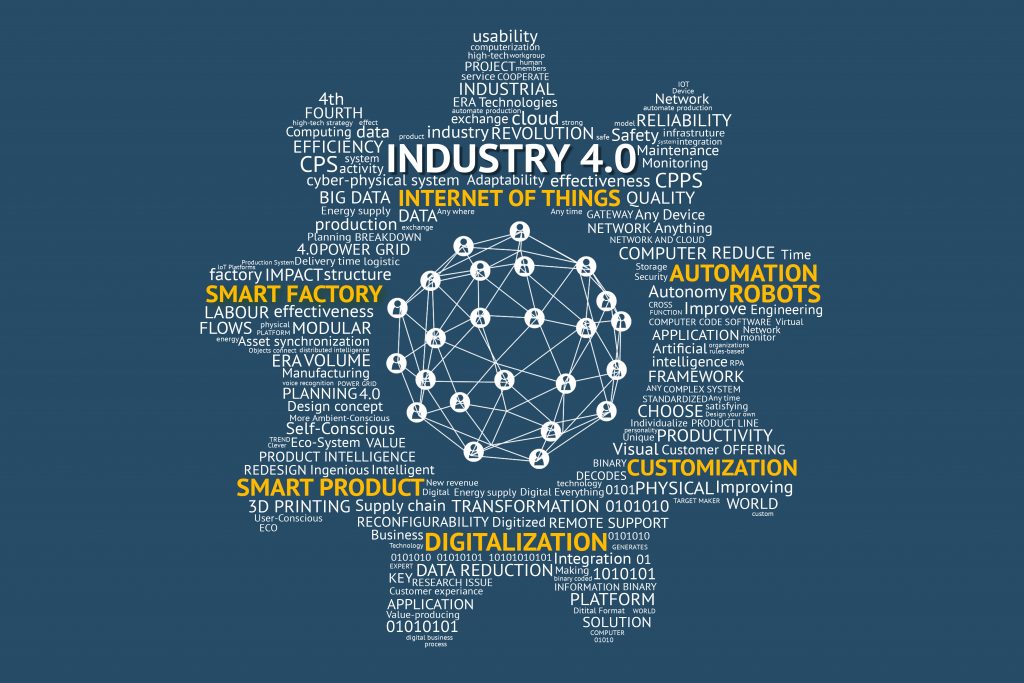
Smart factories already exist, and they’re getting bigger and better every day. Industry 4.0 pioneers in a wide variety of industries are forcing competitors to embrace Smart Automation as a tool to take them to the next level.
Inside the Smart Factory
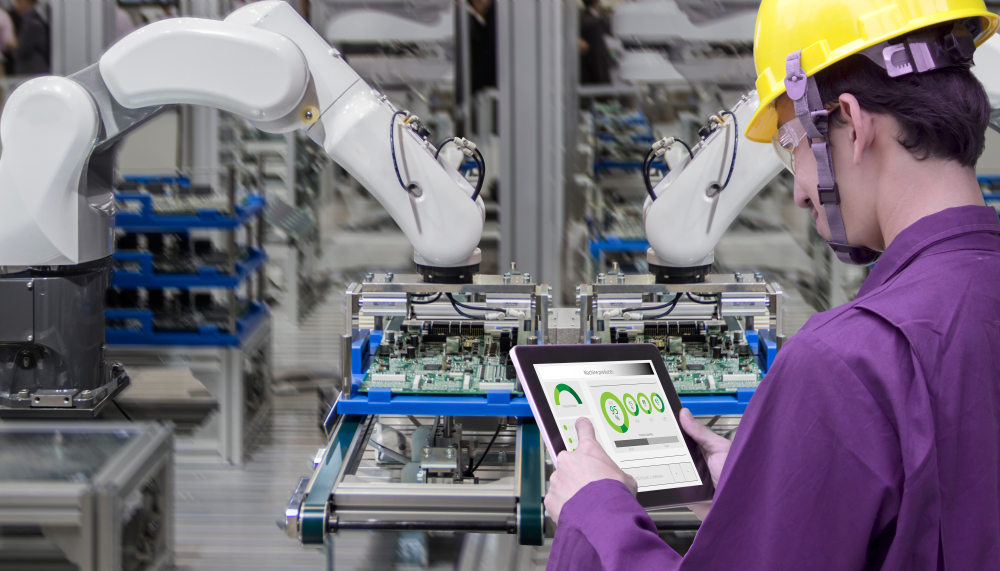
What is a Smart Factory like? Envision a facility in which self-driving vehicles communicate with production-line robots to request and deliver necessary parts without human intervention. Imagine these connected machines on the production floor communicating with workers on the top floor to convey a wide variety of information, such as production cycle times, mechanical breakdowns, and predictive maintenance.
Smart robots and machines equipped with smart sensors can generate a virtually-unlimited amount of data (often referred to as “big data”) that can be shared with multiple locations via cloud technology. This data can be used not only to monitor real-time production status but also to predict future maintenance needs. Can you imagine a robot continually analyzing its productivity and condition, so it can order replacement parts or other maintenance needs before it breaks down?
The Skills Gap

At one time, many workers feared the day when robots would replace humans in the workplace. Some still do. However, the reality of Industry 4.0 is quite different. While it’s true that robots and automated machines have replaced some jobs, the advanced technologies required by Industry 4.0 have and will continue to generate a tremendous demand for highly-skilled workers to program, analyze, and maintain the many parts of these complex systems.
That sounds fantastic until you realize that industry experts believe there’s a tremendous shortage of workers qualified to fill these positions. According to a recent study by Deloitte, nearly 3.5 million manufacturing jobs will need to be filled in the next decade. Because of what is commonly known as the “skills gap,” however, experts estimate as many as 2 million of those jobs could go unfilled.
Training for a New World
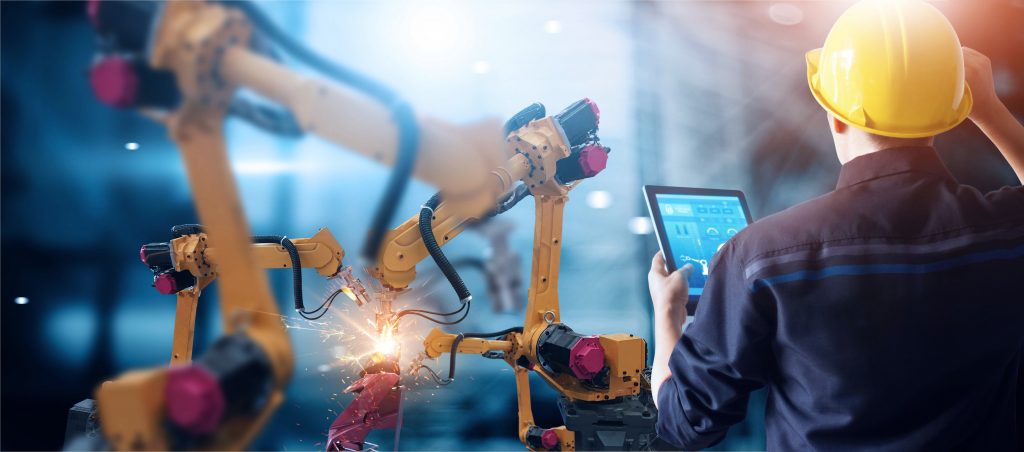
Despite the fact that we live in a connected world and understand its benefits, many people still lack the skills they will need to thrive in an Industry 4.0 environment. While many people have embraced advanced technology in their personal lives, they lack real-world exposure to manufacturing equipment and processes.
To prepare students and current workers for careers in smart factories, educators and companies must teach skills in a variety of areas, including industrial equipment and technology, smart sensors and smart devices, computerized control systems, network security, and data collection and analysis. Experience with real-world equipment and access to state-of-the-art training will be critical.
SACA’s Vision
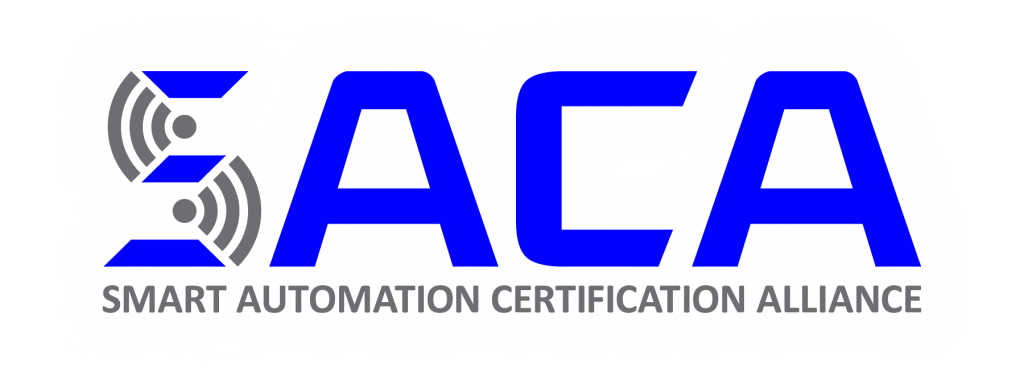
Once you gain experience and receive the training you need, how will you market yourself to employers? How can you easily demonstrate to others the skills, experience, and training that you possess?
The Smart Automation Certification Alliance (SACA) offers highly-affordable, accessible Industry 4.0 certifications for a wide range of industries. While many certifications are available today that address isolated competencies, from welding and machining to maintenance and IT, SACA certifications are different. They certify “connected systems” skills that address the integration of these technologies with Industry 4.0 technology.
SACA’s vision is to provide certifications that significantly increase the number of individuals who possess the skills represented by these credentials. This will ensure that companies have the highly-skilled workers they need, and individuals are prepared to be successful in Smart Factory jobs that require certified “connected systems” skills.
- Published in News











